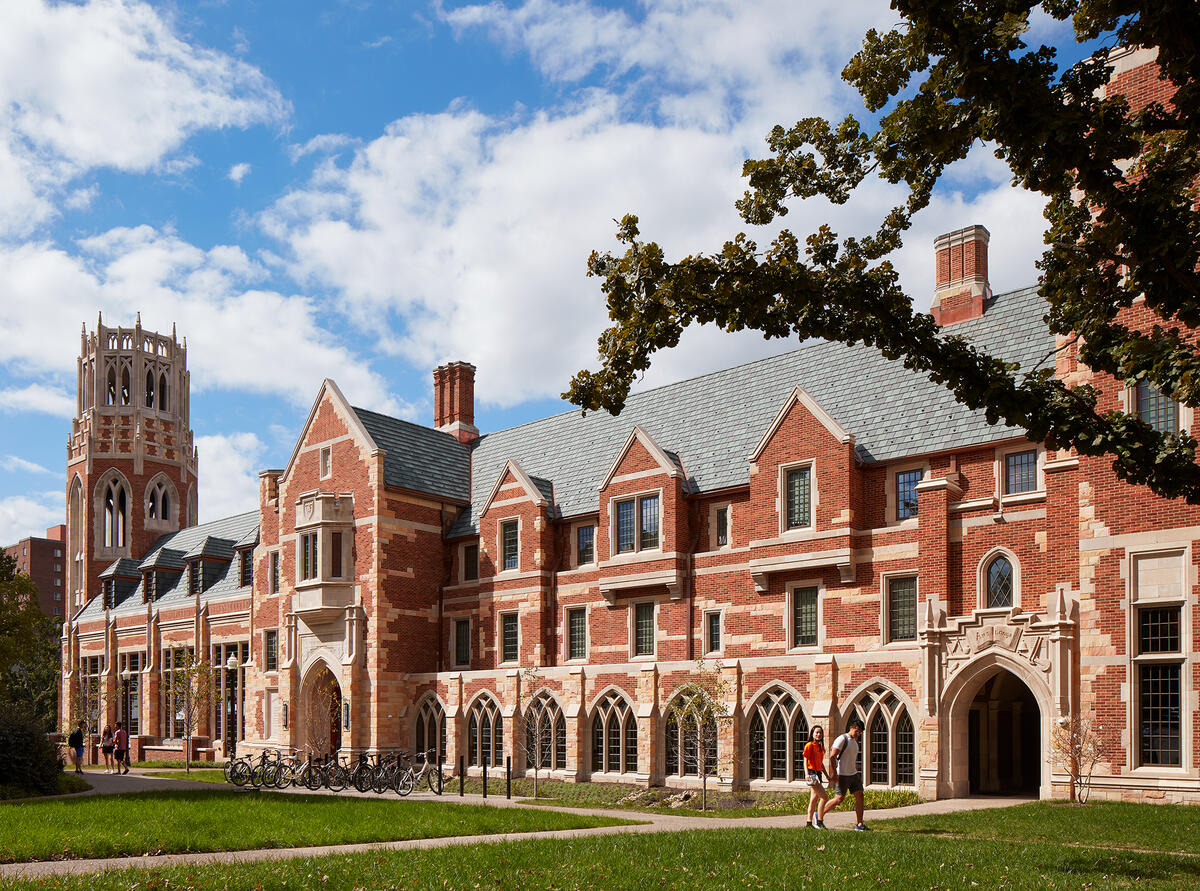History of Art and Architecture launches new major in architecture and the built environment

For a number of years, the College of Arts and Science has offered courses in architecture, along with a pre-architecture advising program for students planning to pursue graduate study in the field. But the college didn’t have an actual degree in the subject—until now. Beginning with the 2020 fall semester, the History of Art and Architecture department will offer a major and a minor in architecture and the built environment.
Assistant Professor of the Practice Matthew Worsnick, a trained architect and historian of architecture, answered a few questions about the new major.
Why did the department decide to add an architecture major?
Student interest! The department was getting a lot of requests for more in-depth coursework in architecture, from students across the university. Some were art history majors or pre-architecture advisees, but others were studying engineering, human development, and policy. A few students were so interested in the subject that they were actually designing their own majors.
In talking about this feedback from students, we also recognized that most of the History of Art faculty are specialists in architecture, cities, or other spatial dynamics—and there are scholars in other departments across Vanderbilt working on spatial questions. Once we had those conversations, it was clear that the major needed to happen. [Associate Professor of History of Art] Betsey Robinson, who had advised some of the students pursuing custom majors and who knows better than anybody how to get things done at Vanderbilt, led the way in making it a reality.
Who should think about studying this major?
This major covers the built environment from a variety of perspectives: planning, public health, urban economies, racial and spatial justice, transportation logistics, housing design, etc. Within the program, students will be able to find professors and courses that satisfy these interests, but also within those courses, they will be able to develop projects that allow them to progressively build a specialization in the questions they are asking, preparing them for professional life or graduate work.

The major also dovetails well with other programs across Vanderbilt. It has built-in flexibility to support overlap in credits earned toward other majors, and it’s especially appropriate for students who are interested in the spatial aspects of social sciences like economics, political science, anthropology, and sociology; for engineering students interested in the connections between engineering and society; and for public health, organizational psychology, and human and organizational development majors who are excited by questions of cities and built space.
For students in our pre-architecture advising program, the major offers a formal but flexible framework to guide their preparation for graduate work.
For you, what was most interesting about the process of developing the major?
As we started designing the major, we all realized how it fit really well with the larger principles and goals of the College of Arts and Science and the larger university. It allows for students across different colleges to come together and reminds us of the potential the humanities have to be a bridge for students in different schools, like Engineering, Arts and Science, and Peabody. I was especially interested in the ways that this major pairs so well with Immersion Vanderbilt because it actively encourages students to connect their intellectual interests with real-world projects and questions.
I also found myself excited to think about Vanderbilt itself as a laboratory to study questions of the built environment. This is especially valuable in the current crisis, which makes traveling difficult. Take, for example, Vanderbilt’s residential living-and-learning community. With its thoughtful planning of how campus residential life will play out—evening discussions with faculty heads of house, student-led residential initiatives, and the intellectual neighborhoods created by the Ingram Commons and residential colleges like Bronson and Zeppos—Vanderbilt is using architecture to advance institutional and educational norms. Another example: the Peabody campus is based on Thomas Jefferson’s designs for an “academical village” that he thought could be the groundwork for a uniquely American university.
What makes Vanderbilt’s architecture major unique?
What makes this such a special program is Vanderbilt. The program is founded on and enriched by the university’s focus on immersive, design-driven thinking and learning. Vanderbilt actively supports collaborations among faculty across fields and departments and encourages interdisciplinary research and thinking. This major brings this exciting collaborative energy to students, as well.

And because of Vanderbilt’s orientation toward interdisciplinarity and collaboration, the major is able to strike an uncommon balance. Many of our peer programs are either so broad that students leave with a purely theoretical understanding of the built environment, or, at the other end of the spectrum, end up as mere technicians. But I think that our new major achieves a rare equilibrium and will graduate students who are practical specialists with a deep humanistic understanding of the field.
What are you most excited for students to learn through this major?
Personally, I’m excited for the opportunity to expose students to architectural thinking. Architects are trained to solve problems in ways that are entirely different from how most other disciplines operate, and it takes time—years—for a person to really absorb architectural thinking and make it a useful tool. The chance to teach students iteratively, across two or three years, and to really pass on the craft of architectural problem solving, is an exciting prospect.

